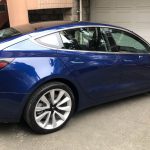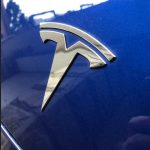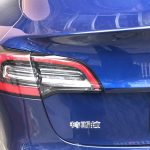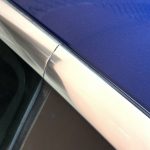The transition from a cell phone to Tesla’s Bluetooth system may become smoother with the help of the company’s built-in seat occupancy sensors. The idea was a suggestion from Tesla owner Rob Hoehn.
Hoehn wrote: “When a Tesla is unlocked and you’re in the middle of a call, it’s pretty eager to switch the audio from the phone over to the car. This can be frustrating when you’re in the middle of a call and you are not even inside the car yet. Or when you’re near the car and someone else gets in the car a similar thing happens. Suggestion: use the seat occupancy sensor to check if the driver is in their seat. Once the seat is occupied, then switch the Bluetooth audio over to the car.”
The idea was met with lots of support on r/TeslaMotors and was the most upvoted Tesla idea in the thread. Hoehn then decided to share his idea with Tesla CEO Elon Musk, who was enthusiastic about the idea. “We should have done this ages ago,” Musk wrote in a reply tweet to Hoehn.
Thanks for mentioning! We should’ve done this ages ago.
— Buff Mage (@elonmusk) January 14, 2020
Other Tesla owners threw out additional improvements on the heels of Musk’s response. One owner stated the transition from music streaming apps to a telephone call was rough and caused intermittent moments of silence as the car transitioned to Bluetooth over the vehicle’s speakers.
Also, car should switch to media from phone/Bluetooth automatically if you’re getting a call. Whenever I was listening to Spotify thru the car app, I had to switch over first before the car picked up the call, which led to lots of “can you hear me now!?” haha
— Viv
(@flcnhvy) January 14, 2020
Transitioning from literally speaking on a phone to a car’s speaker system seems to be an issue in most cars. In traditional combustion engine cars, the phone will switch over to the car speakers when the engine is turned on making the transition smoother. There is no key to turn or button to push in a Tesla to activate its motor, however. When an owner is in the Bluetooth range of their vehicle, the phone may automatically connect to the vehicle’s speaker system even if the driver is not in the vehicle itself.
The utilization of a Bluetooth system that would rely on seat sensors could be the solution to this issue. The Bluetooth system would not activate unless the driver’s seat was occupied by a human being and would not connect to the car’s speaker system if the owner is simply near the vehicle.
Tesla has utilized its seat sensors for other solutions in the past. The company submitted a patent in January 2019 that would use the sensors to determine what airbags would be most beneficial for a particular passenger’s size and frame in the event of an accident. The sensors are a versatile piece of equipment and they give Tesla free reign to improve its vehicles. While they have been used for safety improvements in the past, this accessibility feature will give Tesla owners additional ease of access when using the Bluetooth feature to have a phone call.
The post Tesla seat sensors could be used to improve smartphone Bluetooth handoff appeared first on TESLARATI.
 (@flcnhvy)
(@flcnhvy) 






 (@ray4tesla)
(@ray4tesla) 




